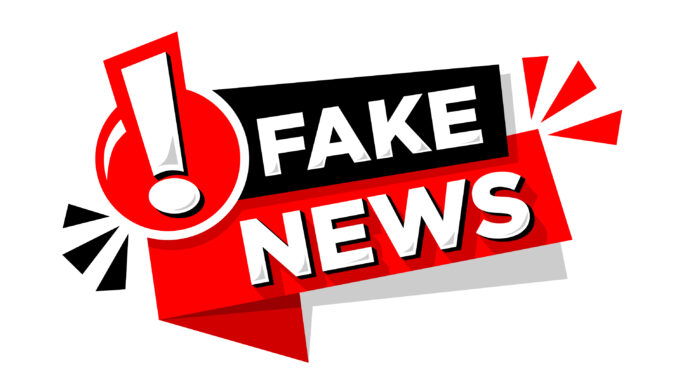
Artificial intelligence has made it easier than ever to create fake content. AI can now generate believable articles, inspirational social media posts, realistic-looking images, and even videos that appear authentic. While AI tools can be helpful, they are also being misused to spread misinformation, push political propaganda, bait engagement for ads, or simply go viral with fake content.
The good news is that there are consistent patterns and red flags that can help you detect AI-generated content before you share it. This guide will teach you exactly how to spot fake AI articles, posts, images, and videos, using real examples and breakdowns.
Why Fake AI Content Is a Problem
Fake AI content floods social feeds with:
-
Misleading political messaging
-
Clickbait scams
-
False celebrity statements
-
Hoaxes posing as news
-
Deepfake images and videos designed to manipulate public opinion
-
AI spam designed to make money from ads or traffic
Critical thinking and verification are now necessary skills online. Let’s break down how to identify AI-generated text, images, and videos.
How to Spot Fake AI Articles
AI-generated articles often look polished and professional but lack real insight. Here are signs an article was likely written by AI:
Red Flags in AI-Written Content
-
Generic or repetitive language
-
No original thought or personal experience
-
Perfect grammar but robotic tone
-
Claims without sources or fake citations
-
Predictable structure using filler subheadings
-
Repetition of words or ideas
-
Overuse of transition phrases like “Moreover” and “Additionally”
-
Vague statements without concrete examples
Real Examples of AI Fake Articles
Example 1: Fake Breaking News
Headline: “Scientists Discover Cure for Depression Using Ocean Waves”
-
No university, medical journal, or doctor is cited.
-
Repeats phrases like “groundbreaking research” five times.
-
Quotes “leading experts” that do not exist.
-
No publication date or author.
This was traced back to an AI-generated content spam site monetized by ads.
Example 2: Fake Health Article
Article claimed: “Drinking warm lemon water cures cancer.”
-
Widely shared in Facebook groups
-
No research links
-
Fake references to Harvard
-
Repeated phrases like “the results speak for themselves”
How to Spot Fake AI Social Media Posts
AI is widely used to generate motivational posts, fake life stories, political narratives, and product promotions. Most AI-generated posts are easy to identify by tone.
Red Flags in AI Text Posts
-
Emotionally manipulative but vague storytelling
-
Overly polished corporate tone
-
No verifiable details (no dates, places, names)
-
Buzzwords and cliches
-
Fake statistics with no source
-
Too generic to be real
Real Examples of AI-Generated Posts
Example 1: LinkedIn Rags-to-Riches Story
Post style:
“I started with only seven dollars in my pocket. Now I run three companies in six countries. Here are five lessons from my journey.”
Breakdown:
-
No company names listed
-
No real accomplishments verified
-
Generic success tips
-
Emotional manipulation used for engagement
-
Classic AI storytelling template: struggle, breakthrough, inspiration
Example 2: Fake Corporate Announcement
“We are excited to announce our new AI-powered platform designed to revolutionize productivity at scale.”
Breakdown:
-
No product details
-
No company representative attached
-
Empty claims and corporate buzzwords
-
AI-like phrasing: “revolutionize productivity”
How to Spot Fake AI Images
AI-generated images are highly realistic but still contain structural flaws.
Red Flags in AI Images
-
Irregular hands or too many fingers
-
Asymmetry in faces and bodies
-
Messy background details
-
Nonsense text on signs or clothing
-
Strange reflections in mirrors or glasses
-
Unrealistic lighting or shadow directions
-
Perfectly symmetrical composition
Real Examples of AI-Generated Images
Example 1: Pope in Puffer Jacket
Image: Viral photo of Pope Francis wearing a stylish Balenciaga puffer jacket
Breakdown:
-
Hand clutching coffee cup melted into sleeve
-
Blurred cross pendant chain
-
Unrealistic glossy lighting
-
Confirmed AI image by Midjourney
Example 2: Explosion at Pentagon
Image claimed a terrorist attack happened
Breakdown:
-
Fence had warped lines
-
Building architecture distorted
-
Shared by fake news accounts
-
No real news source confirmed it
How to Spot AI Videos (Deepfakes)
AI video (deepfakes) are more advanced but also have giveaways.
Red Flags in AI Videos
-
Lip movements slightly delayed from audio
-
Blinking rate unusually low or unnatural
-
Facial edges flicker or blur
-
Shadows look flat or missing
-
Clothing and hair edges warp
-
Background stays oddly static
Real Examples of AI Video Fakery
Example 1: Fake Celebrity Statement
A deepfake circulated of Tom Cruise promoting a crypto scam.
Breakdown:
-
Mouth movement did not match sounds
-
Blinking was robotic
-
Voice clone lacked natural breathing sounds
Generic AI-Generated Expressions to Watch For
These common phrases appear frequently in AI-generated writing and posts. If you see several of them in a row, that’s a red flag.
Corporate AI buzzwords
-
In today’s fast-paced world
-
Driving innovation
-
Taking it to the next level
-
Empowering teams
-
Revolutionizing the industry
-
Unlock your potential
-
At scale
-
Seamless integration
-
Delivering value
Motivational AI filler
-
Never give up on your dreams
-
Success does not happen overnight
-
The journey is the reward
-
Failure is not the opposite of success
-
Believe in yourself
Blog filler phrases
-
In this comprehensive guide
-
Without further ado
-
Let’s dive in
-
Look no further
-
Here is everything you need to know
-
It is important to note
Empty LinkedIn cliches
-
I am humbled and honored
-
Beyond grateful
-
Let me share my journey
-
If I can do it, so can you
-
Let’s connect
Quick AI Detection Checklist
| Content Type | How to Check |
|---|---|
| Article | Look for sources, author history, writing style |
| Social post | Look for generic tone, vague claims |
| Image | Zoom on hands, text, background |
| Video | Watch lips, blinking, head motion |
| Fact claims | Search for verification |
| URL/link | Check credibility and age of domain |
Final Thoughts
AI-generated content is not going away, and it is getting harder to detect. The key is not panic, but awareness. Slow down before you share. Verify claims. Reverse search images. Check sources. Trust patterns over perfection.
